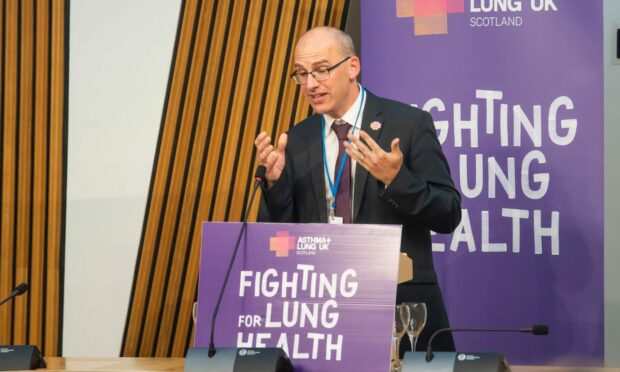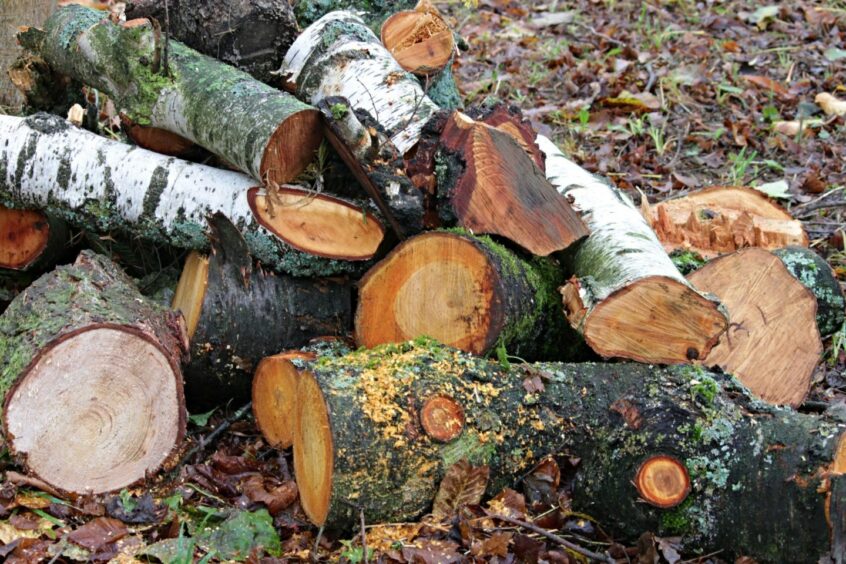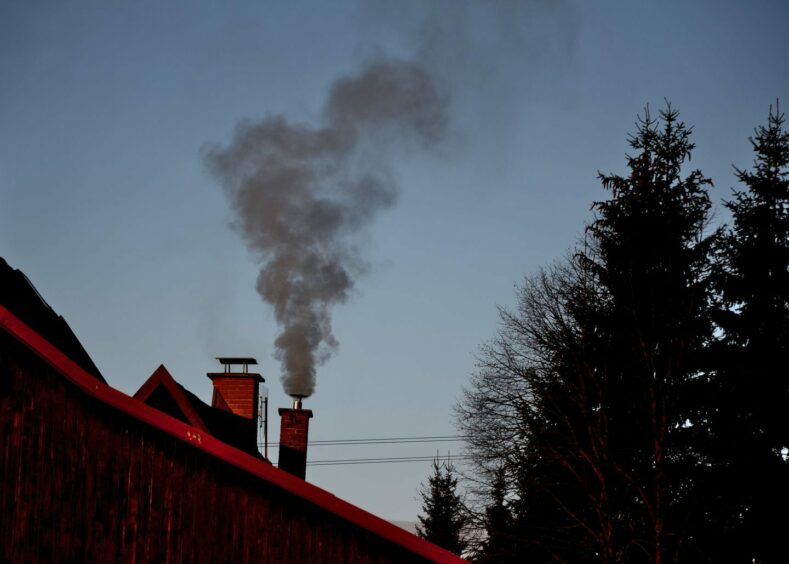More people burning wood for heat during the energy crisis could be bad news for anyone who uses an inhaler.
People have flocked to suppliers of wood burners and firewood as households face uncertainty over gas and electricity bills.
Asthma and Lung UK experts fear stove owners burning wet or treated wood, or other inappropriate fuels, could worsen air quality.
They say that could trigger more asthma attacks.
“We are very concerned about this,” says Joseph Carter, the charity’s head of devolved nations.
Should I stop burning wood?
That doesn’t mean you have to take a hammer to your wood burner.
Modern stoves meet less polluting Ecodesign standards made compulsory at the start of 2022.
And responsible firewood suppliers sell kiln-dried wood, which gives off less pollutants than wood with a moisture content of above 20%.
But Joseph says if people have to burn whatever they can find to stay warm, the impact on health could be “scary”.
“If we see more people entering into this who don’t really know what they’re doing and are just salvaging wood they’ve found from a nearby wood, or even burning rubbish, then the impact on our lungs, particularly those who have lung conditions, is quite scary.
“Asthma and Lung UK Scotland are very concerned about the risk of a surge in wet wood burning across Scotland in the winter months as people try to save on their gas and electricity bills.
“This is a big challenge.”
Are wood burners the problem?
Old ones are. Newer Ecodesign models are said to reduce emissions of harmful PM2.5 particles by nearly 90%.
PM2.5 are particles with a diameter of 2.5 microns or less. They can become lodged in the lungs and pass into the bloodstream, potentially causing illness.
Exposure to PM2.5 raises the risk of children developing asthma.
And an increase in air pollution can set off symptoms for those with the respiratory condition.
Joseph adds: “There are lots of old ones still out there.”
But what if it is only one or two homes in a street burning dirty fuel in an old stove?
“The impact is still there.
“When it comes to burning wood or burning coal, the pollution goes up and comes straight back down again.
“And it rains down on neighbours or people who are walking past who have existing lung conditions.
“It might simply make your nose runny or create a slight cough.
“But it could lead to a damaging asthma attack, which could be incredibly serious and could potentially hospitalise that individual.”
The reality for people with asthma
If you’re asthmatic you may have already started increasing your dose of preventer medication as autumn gets under way.
“It’s very scary. A lot of people take additional precautions during winter because they’re concerned about the impact of increased coal and wood burning around them.”
Meanwhile, Joseph says hard-up households may still “turn in desperation” to burning whatever they can find.
“If more people turn to this in desperation to try to reduce their fuel bills, then it’s only going to get worse.
“Not only the impact on the person burning the fuel but also people living nearby.
“This is yet another hidden cost associated with the cost of living crisis.”
What are governments doing?
First Minister Nicola Sturgeon has announced a doubling of Scotland’s fuel insecurity fund from £10 million to £20 million to help people amid rising energy bills.
Meanwhile, the UK’s new Prime Minister, Liz Truss has capped energy bills at £2,500.
However, this is unlikely to be enough to prevent households from feeling the pinch.
Gas and electricity tariffs per kWh are set to double from October.
Joseph adds: “The actual cost to the public purse of lives being damaged and people being hospitalised because of people entering into this domestic fuel space is very worrying.
“It’s far cheaper in the grand scheme of things for the Scottish Government to invest in giving poor people additional grants and support if what comes to the UK Government isn’t sufficient.”



Conversation